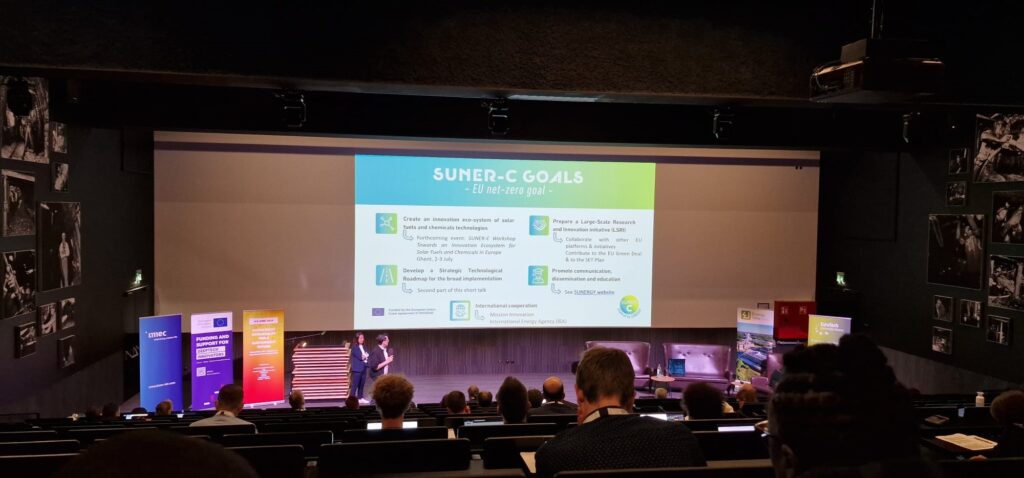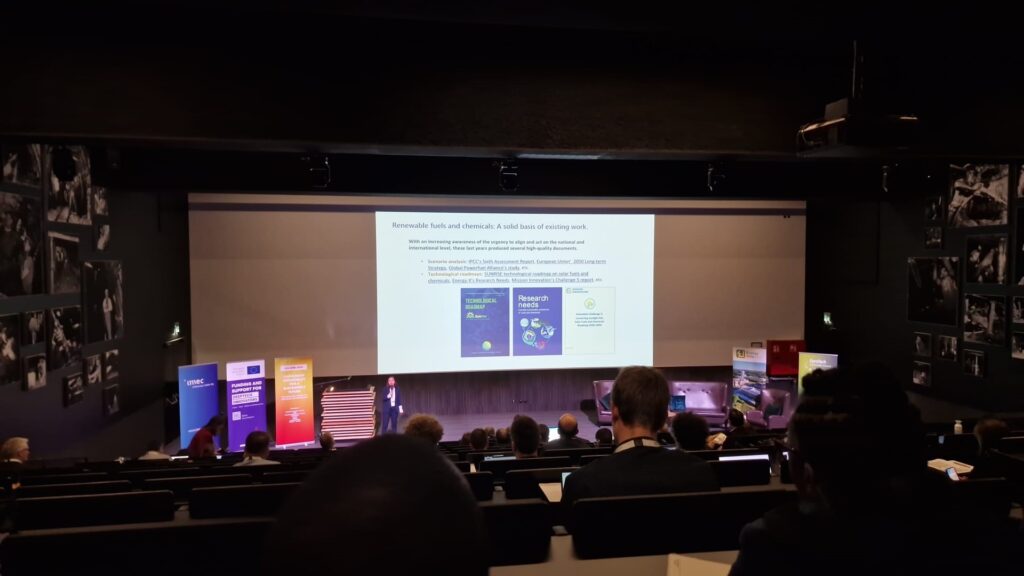European Innovation Marketplace (EIM) together with EU Project SOLDAC attended the Congress held on June 4th-5th 2024, at Thor Park, Genk (BE)
To keep global warming to no more than 1.5°C – as called for in the Paris Agreement – GHG emissions must peak before 2025, be reduced by 45% by 2030 and reach net zero by 2050
In the context of an accelerated climate change -we’re on track for a global average temperature rise of 2.5-2.9°C above pre-industrial levels- following the latest Annual Emissions Gap Report released by UNEP, we definitely have a common challenge, and there for the EU strives to become the world’s first climate-neutral continent by 2050 by being an economy with net-zero greenhouse gas emissions.
A net-zero world can be within our reach, but globally we will have to leave aside our narrow minded local interests and open up to close cross-border collaborations in record time to make our planet a far different place —one where companies have recreated their business models, people have adapted their lifestyles, and governments have taken measures to protect natural resources.
It’s in this light that the European Innovation Council (EIC) put words into action by publishing a 24 Mio. € challenge dedicated to solar-to-X technologies in December 2023. The call aims to develop devices at a prototype level, to establish metrics for fair benchmarking and to explore underlying phenomena by means of computational materials science because for both causes, the specific EU Challenge and the climate change mitigation, it’s key to produce sustainable fuels, chemicals and materials solely from renewable energy (sunlight and wind) and abundant available molecules (CO2, H2O, N2) cause this allows us simultaneously to reduce future GHG-emissions while we decarbonise our atmosphere until reaching the desired net-zero condition.
Hence the Sunergy Initiative and the EU funded SUNER-C CSA Project in collaboration with the European Innovation Council and SMEs Executive Agency (EISMEA), imec, EuroTech Universities Alliance, the EU projects CATART Project, CONDOR_EU and FlowPhotoChem.eu saw this as the perfect timing to organise a two-day International Congress on innovations providing fossil-free products for diverse sectors, such as renewable hydrogen, sustainable aviation fuels or green fertilizers.

The venue chosen in Genk (BE) was just perfect! The beautiful and iconic site of Thor Park, a former carbon coal mine, unites the past and future of our energy transition as nowadays renowned research institutions, start-ups, growth companies and global players in the energy sector, manufacturing industry and smart city applications come together here.
The content offered during the Congress was phenomenal! We got a comprehensive overview of the current state-of-play of power-to-x and solar-to-x technologies and CCU by Nicola Armaroli (CNR – Italian National Researc Council), Frédéric Chandezon (CEA) and Joanna Kargul (CENT, Warshaw University) and 42 other renowned international speakers and panelists, among whom, policy makers from different EU countries and EU institutions, financial and industrial stakeholders, scientists and academics participated in discussions that spon the whole innovation chain.
- The latest results from excellent academic research were showcased by Professors, Doctors and PhD Students from the University of Cambridge (Dr. Virgil Andrei and Prof. Laura Torrente Murciano), University of Galway (Prof. Pau Farras), the Technical University of Munich (Prof. Nicolas Pluméré), l’Institut Polytechnique de Paris (PhD Sylvain Cros), the KU Leuven (Prof. Rachel Armstrong), University of Basque Country (Iker Aguirrezabal), CENT Warshaw University (Prof. Joanna Kargul) and Imperial College London (Prof. Ifan Stephens)
- Viable business models and ways to scale up innovative solar-to-X technologies were shared by industrial leaders and research centers such as Toyota Motor Europe (Hannah Johnson), VITO (Deepak Pant and Miet Van Dael), imec (Joachim John), CEA (Dr. Muriel Matheron), imec-IMMOMEC (Tom Aernouts).
- Demonstrations of mature solutions on their way to commercialisation and their integration into the existing energy system were explained by INERATEC (Philipp Engelkamp) and the European Synchroton Radiation Facility (Ennio Capria).

Next to plenaries and panel discussions, several projects pitched or presented their results in diverse working groups on the following items in parallel sessions:
- From Technology to Innovation, from Technological Readiness Level to Market Readiness Level led by Ennio Capria from the European Synchroton Radiation Facility.
- Social challenges and opportunities
- Techno-sustainability assessment: Practical use cases – are the necessary KPIs met to go to the next stage?
- How to make a business out of it? EIC Innovation training session led by Francesco Matteucci from EIC
- EIC insights: Ask-me-anything by EIC project officers
- How to rent a CEO? EIB Executives in residence programme
All attendees could actively contribute to the development of a holistic techno-sustainability methodology.
For SOLDAC it was an excellent opportunity to look for partners for our future workshop and to enjoy great opportunities to network thanks to the exchanges with leading academics, visionary entrepreneurs, industrial leaders, policymakers and investors.
Elke Moors, Managing Director, European Innovation Marketplace